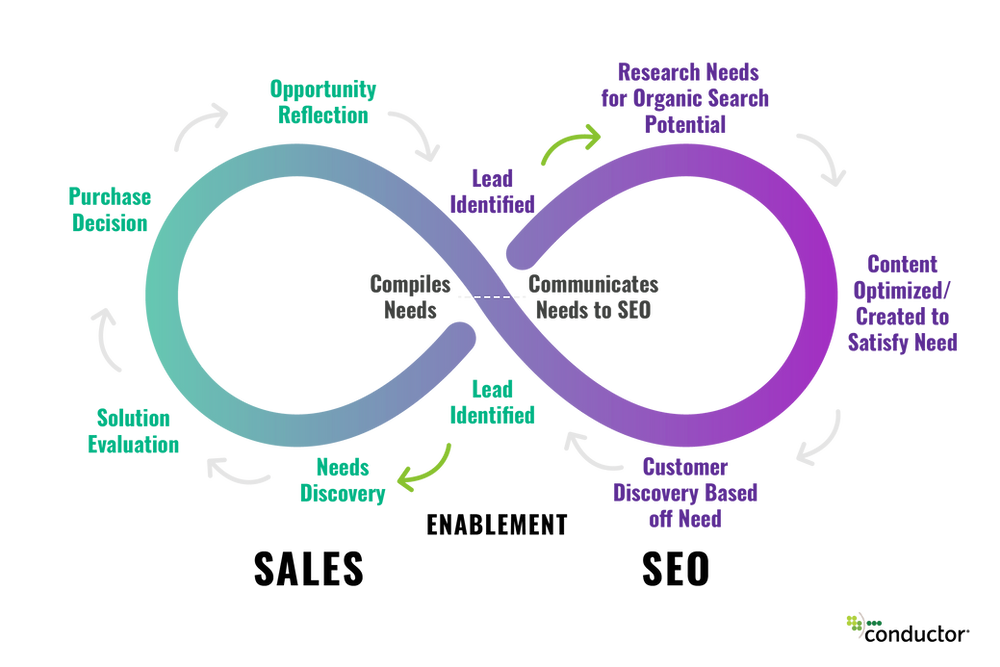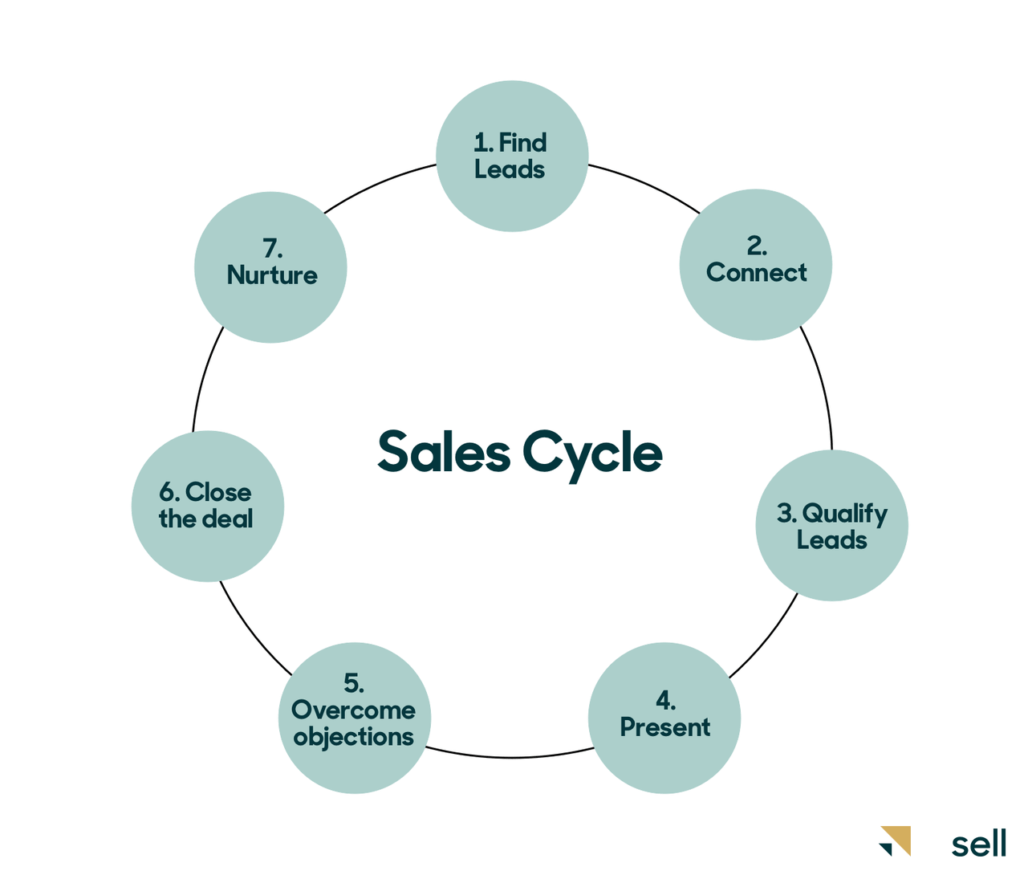What is Sales Cycle SaaS?
Sales Cycle SaaS refers to a software-as-a-service (SaaS) solution designed to optimize and automate the various stages of the sales cycle. It offers a comprehensive platform that integrates with customer relationship management (CRM) systems, enabling businesses to streamline their sales operations, improve efficiency, and drive revenue growth. By leveraging Sales Cycle SaaS, companies can effectively manage leads, track customer interactions, and gain valuable insights into their sales performance.
Understanding the Sales Cycle

Before delving deeper into Sales Cycle SaaS, it’s essential to have a clear understanding of the sales cycle itself. The sales cycle represents the step-by-step process involved in converting a prospect into a paying customer. It typically consists of several stages, including prospecting, lead generation, lead qualification, proposal, negotiation, and closing. Each stage plays a crucial role in progressing the sales process and ultimately driving revenue.
The Importance of Sales Cycle Optimization
Optimizing the sales cycle is vital for businesses aiming to increase revenue, improve conversion rates, and enhance customer satisfaction. A streamlined sales cycle ensures that sales reps have the necessary tools, information, and support at each stage to effectively engage with prospects and move them through the buying journey. By optimizing the sales cycle, businesses can reduce inefficiencies, eliminate bottlenecks, and create a seamless experience for both their sales teams and customers.
Benefits of Sales Cycle SaaS
Sales Cycle SaaS offers a wide range of benefits that can significantly impact the success of your sales process. Let’s explore some of the key advantages:
Enhanced Efficiency: Sales Cycle SaaS automates manual tasks, such as data entry and reporting, allowing sales reps to focus on building relationships and closing deals.
Improved Collaboration: With Sales Cycle SaaS, teams can easily collaborate and share information, ensuring everyone is on the same page and working towards common goals.
Real-time Insights: Sales Cycle SaaS provides real-time analytics and reporting, offering valuable insights into sales performance, pipeline health, and areas for improvement.
Scalability and Flexibility: SaaS solutions are highly scalable, allowing businesses to adapt and grow without the need for significant infrastructure investments.
Streamlined Lead Management: Sales Cycle SaaS enables efficient lead management, from prospecting and nurturing to conversion, ensuring no opportunities slip through the cracks.
To fully capitalize on the benefits of Sales Cycle SaaS, businesses often partner with trusted merchant record providers like PayPro Global. As a merchant of record, PayPro Global offers a comprehensive suite of services designed to simplify the sales process and optimize revenue management.
Their platform acts as a secure payment gateway, handling payment processing, compliance, and tax management on behalf of businesses. Visit their website to learn more.
By leveraging merchant-of-record services, companies can focus on their core competencies while ensuring seamless and compliant sales transactions.
Implementing Sales Cycle SaaS: Key Considerations
When implementing Sales Cycle SaaS in your organization, several key considerations can help ensure a successful transition. These include:
Identify Your Sales Goals: Clearly define your sales objectives and align them with the features and capabilities of the Sales Cycle SaaS solution you choose.
Evaluate Integration Compatibility: Ensure that the Sales Cycle SaaS integrates seamlessly with your existing CRM and other relevant tools to avoid data silos and streamline processes.
Customization and Scalability: Assess the level of customization and scalability offered by the Sales Cycle SaaS solution to meet your unique business needs and future growth plans.
User Adoption and Training: Plan for effective user adoption by providing comprehensive training to your sales teams, ensuring they understand the benefits and are proficient in using the platform.
Data Security and Compliance: Prioritize data security and compliance by selecting a Sales Cycle SaaS provider that adheres to industry-standard security protocols and regulations.
Stage 1: Prospecting and Lead Generation
The first stage of the sales cycle involves prospecting and lead generation. This is where businesses identify potential customers who may have an interest in their products or services.In this stage, sales teams employ a range of tactics. These include cold calling, utilizing email marketing, engaging in social media outreach, and employing content marketing strategies to attract and interact with potential customers.
Sales Cycle SaaS solutions offer advanced lead management features, enabling businesses to track and nurture leads effectively.
Stage 2: Qualifying and Nurturing Leads
Once prospects are identified, the next step is to qualify and nurture leads. This involves assessing the potential value of each lead and determining whether they meet the criteria for becoming a qualified opportunity. Sales reps engage in personalized conversations, follow-ups, and targeted marketing efforts to build relationships, address concerns, and move leads closer to conversion. Sales Cycle SaaS platforms provide lead scoring, automated nurturing campaigns, and communication tracking to optimize this stage.
Stage 3: Proposal and Presentation
As leads progress through the sales cycle, the third stage involves presenting proposals and solutions to address their specific needs. Sales reps leverage Sales Cycle SaaS tools to create professional and compelling proposals, tailor-made for each prospect. These tools may include templates, customization options, and collaboration features to ensure effective communication and a seamless proposal presentation process.
Stage 4: Closing the Deal
Closing the deal is a critical stage in the sales cycle. Sales reps utilize Sales Cycle SaaS solutions to track and manage the final negotiation, pricing, and contract stages. These platforms often offer features like deal tracking, document management, and e-signature integration, streamlining the closing process and ensuring a smooth transition from prospect to customer.
Stage 5: Post-Sales and Customer Relationship Management
Once a deal is closed, the post-sales stage comes into play. Effective customer relationship management is crucial for maximizing customer satisfaction, fostering loyalty, and driving repeat business. Sales Cycle SaaS solutions offer robust CRM functionalities, allowing businesses to manage customer interactions, track communication, and provide ongoing support. This stage involves activities such as onboarding, upselling, cross-selling, and gathering feedback to nurture long-term relationships with customers.
Key Metrics for Sales Cycle SaaS
To gauge the effectiveness of your sales cycle and the impact of Sales Cycle SaaS, it’s essential to measure key performance metrics. Some important metrics to consider include:
Conversion Rate: The percentage of leads that successfully convert into paying customers.
Sales Cycle Length: The average time it takes to move a prospect through the sales cycle.
Win Rate: The percentage of opportunities that result in closed deals.
Lead Response Time: The time it takes for sales reps to respond to leads’ inquiries or requests.
Pipeline Value: The total value of all opportunities in the sales pipeline.
By tracking and analyzing these metrics, businesses can identify areas for improvement, optimize their sales process, and make data-driven decisions to drive revenue growth.
Sales Cycle SaaS Best Practices
To ensure maximum benefits from Sales Cycle SaaS, consider the following best practices:
Align Sales and Marketing: Foster collaboration between sales and marketing teams to ensure a smooth transition from lead generation to nurturing and closing.
Focus on Customer Experience: Prioritize delivering an exceptional customer experience throughout the sales cycle to enhance satisfaction and increase the likelihood of repeat business.
Continuously Train and Develop: Provide ongoing training and development opportunities for your sales teams to ensure they stay up-to-date with the latest industry trends and best practices.
Regularly Review and Optimize: Continuously review and optimize your sales cycle and Sales Cycle SaaS implementation based on performance data and customer feedback.
Integrating Sales Cycle SaaS with CRM
One of the key advantages of Sales Cycle SaaS is its ability to seamlessly integrate with CRM systems. This integration enhances data visibility, streamlines workflows, and ensures a centralized repository of customer information. By integrating Sales Cycle SaaS with your CRM, you can create a unified platform that empowers sales teams to effectively manage leads, track interactions, and provide personalized experiences throughout the sales process.
Overcoming Challenges in Sales Cycle SaaS Implementation
Implementing Sales Cycle SaaS may come with its own set of challenges. Some common challenges businesses may face include:
Resistance to Change: Sales teams may initially resist adopting new technology and changing their established processes. Proper training, clear communication, and highlighting the benefits can help overcome this resistance.
Data Migration and Integration: Migrating existing data and integrating Sales Cycle SaaS with existing systems can be complex. Thorough planning, data cleansing, and collaboration with IT teams can alleviate these challenges.
User Adoption and Engagement: Ensuring widespread user adoption and active engagement with the Sales Cycle SaaS platform requires effective communication, training, and ongoing support.
By proactively addressing these challenges, businesses can smoothen the implementation process and maximize the benefits of Sales Cycle SaaS.
Training and Onboarding for Sales Cycle SaaS
Proper training and onboarding are crucial for the successful adoption of Sales Cycle SaaS. Consider the following strategies:
Comprehensive Training Programs: Develop training programs that cover all aspects of Sales Cycle SaaS, including features, functionality, and best practices.
Hands-On Practice: Provide opportunities for sales teams to practice using the Sales Cycle SaaS platform in a simulated environment.
Ongoing Support: Offer ongoing support through training materials, user guides, and a dedicated support team to address any questions or challenges that may arise.
By investing in comprehensive training and onboarding, businesses can ensure that their sales teams are equipped with the knowledge and skills needed to leverage Sales Cycle SaaS effectively.
Sales Cycle SaaS vs. Traditional Sales Processes
Compared to traditional sales processes, Sales Cycle SaaS offers numerous advantages. It eliminates manual and time-consuming tasks, enhances collaboration, provides real-time insights, and offers scalability. On the contrary, conventional sales procedures typically depend on manual input of data, fragmented systems, and restricted insight into sales effectiveness. By adopting Sales Cycle SaaS, businesses can gain a competitive edge by improving efficiency, productivity, and customer satisfaction.
Conclusion
In today’s fast-paced and highly competitive business landscape, optimizing the sales cycle is crucial for sustainable growth. Sales Cycle SaaS offers a comprehensive solution to streamline sales processes, enhance productivity, and drive revenue growth. By implementing Sales Cycle SaaS, businesses can effectively manage leads, track customer interactions, gain valuable insights, and foster long-term customer relationships. Embrace Sales Cycle SaaS to revolutionize your sales process and stay ahead in the ever-evolving marketplace.





